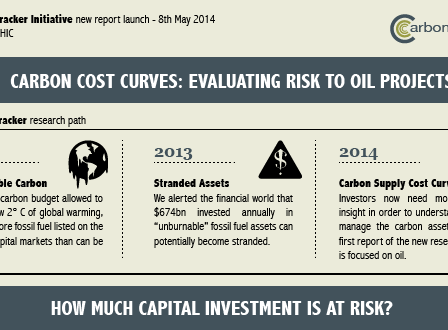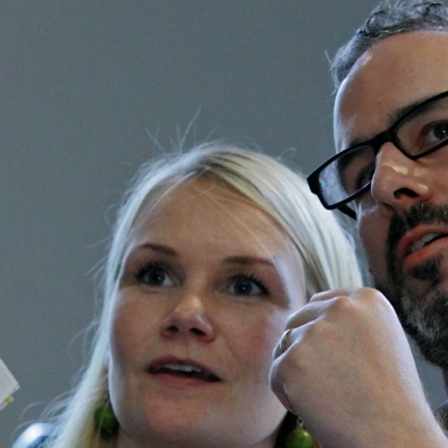In recent years, climate risks have been propelled high up the agendas of investors, businesses and the securities markets. Sitra, Nasdaq Helsinki and the Climate Leadership Council (CLC) have jointly commissioned an assessment of the carbon intensity and climate impact of companies listed on Nasdaq Helsinki (the Helsinki Stock Exchange). This comprehensive public report on the carbon footprint of all companies listed on a single stock exchange is the first of its kind. A screening tool for investors, which they can use to assess the CO2 intensity of their investments, i.e. the amount of CO2 emission equivalents per euro invested, was published alongside the report.
The study commissioned by Sitra shows that, compared to some select benchmark indices (the German DAX and the Norwegian OSEBX), Nasdaq Helsinki is less carbon-intensive. However, it is more carbon-intensive than the MSCI World index, which is commonly used as a global benchmark.
“From the viewpoint of investors, assessing the portfolio CO2 intensity and the climate impact of portfolio companies is here to stay,” says the President of Nasdaq Helsinki, Lauri Rosendahl. “This helps investors to assess their ownership and the associated risks in a more holistic manner. We hope that the report published today will provide listed companies with benchmark data in support of their sustainability work and encourage them to raise their game.”
According to a benchmark study carried out by Corporate Knights Capital, last year the companies listed on Nasdaq Helsinki were ranked among the world’s best at sustainability reporting for the second year in a row. Nasdaq Helsinki also strives to be a sustainable stock exchange itself: the Helsinki Stock Exchange has been carbon-neutral since 2011 and has managed to reduce its own carbon footprint for three consecutive years.
The key results
According to the carbon footprint analysis commissioned from the South Pole Group, Nasdaq Helsinki is less emission-intensive than Frankfurt’s DAX or Oslo’s OSEBX. When indirect emissions are taken into account, Nasdaq Helsinki also outperforms the EURO STOXX 50 index. The total annual relative greenhouse gas (GHG) emissions of the 124 companies listed on Nasdaq Helsinki were lower than the corresponding figure in the benchmark indices: the Nasdaq Helsinki-listed companies outperformed Frankfurt’s DAX by 44% in direct emissions and Oslo’s OSEBX by 12%. With respect to indirect emissions, taking into account the indirect emissions from supply chains and product usage, companies listed on Nasdaq Helsinki outperformed the DAX by 34% and the OSEBX by as much as 46%.
Based on the report, investing one million euros in companies listed on Nasdaq Helsinki results in financed annual direct emissions of 294 tCO2e (Scope 1 and 2; see below).
Furthermore, taking into account the indirect emissions from supply chains and product usage (Scope 3; see below), in the case of a one million euro investment, the financed emissions would amount to an annual total of 893 tCO2e.
Lauri Rosendahl notes that the emissions data used in the analysis only looks at one point in time. In his opinion, it is also important to consider what the emissions profiles of the companies will look like in the future, and what CO2 emission-reduction strategies and goals the firms have set. The report therefore also includes a section focusing on the climate strategies and targets of Finnish companies.
The results of the assessment were presented at the United Nations event, Regional Dialogue 2015: Nordic Countries, which was attended by more than 100 CEOs and CFOs of listed companies and institutional investors, representatives of capital market regulators, and executives of Nasdaq Nordic. Nordic stock exchanges have declared their commitment to the UN’s Sustainable Stock Exchanges (SSE) initiative. In addition to the report, a screening tool was published at the event. This enables investors to assess the carbon footprint of Finnish investments in their portfolios against companies listed on Nasdaq Helsinki. The tool will also lower the threshold for assessing the climate risks posed by foreign investments.
“With the Paris Climate Conference approaching, the discussions on carbon risk have intensified. Politicians and citizens are putting pressure on investors to increase transparency in terms of the climate impacts of their investments. Companies have already begun to realise that decarbonisation is a major competitive factor,” says Tiina Kähö, a Senior Lead at Sitra.
According to a survey targeted at businesses and conducted for Sitra by the market research company Taloustutkimus, two thirds of businesses view carbon neutrality as a major competitive factor. Sitra has strived to help Finnish investors understand and assess the risks and phenomena associated with climate change by organising a range of discussion events focusing on the latest information on global climate change trends.
What does the report include?
The report reveals the total GHG emissions of companies listed on Nasdaq Helsinki and identifies which companies and sectors have the greatest CO2 emissions in relation to market value and revenue. The analysis is based on emissions data reported by companies in 2014. In cases where no emissions data has been disclosed, the South Pole Group has estimated the emissions based on sector and company-specific variables.
For more information, please contact:
Tiina Kähö, Senior Lead, Sitra, firstname.lastname@sitra.fi, tel. +358 294 618 235
Lauri Rosendahl, President, Nasdaq Helsinki, firstname.lastname@nasdaq.com, tel. +358 400 406 228
Maximillian Horster, South Pole Group, m.horster@thesouthpolegroup.com, tel. +41 78 613 7291
Emma Henningsson, Director, CDP Nordic, emma.henningsson@cdp.net, +46 705 145 726
Tuula Sjöstedt, Lead, Communications and Public Affairs, Sitra, firstname.lastname@sitra.fi, tel. +358 50 3738 601
Publication details
Climate Impact Assessment of companies listed on Nasdaq Helsinki
Authors: Fredrik Fogde (lead author), Alexandre Gazuit and Maximilian Horster – South Pole Group; and Emma Henningsson – CDP
Place of publication: Helsinki
Year of publication: 2015
Published by: Sitra
Download the report: https://www.sitra.fi/en/publications/climate-impact-assessment-companies-listed-nasdaq-helsinki/
Download the Screening Tool: https://media.sitra.fi/2015/11/06130407/20151030finalnasdaqomxhelsinkitool-2.xlsm
What are direct and indirect emissions?
Direct emissions (Scope 1) = direct emissions from own operations
Indirect emissions (Scope 2) = all emissions that stem from buying electricity and heat and that are apportioned according to the company’s consumption
Indirect emissions (Scope 3) = other indirect emissions up- and downstream, such as those from a company’s supply chain or product usage
The Finnish Innovation Fund Sitra is a future-oriented organisation that promotes Finland’s competitiveness and the well-being of the Finnish people. We anticipate societal change, try out new operating models and accelerate business activities aimed at creating sustainable well-being.



















Recommended